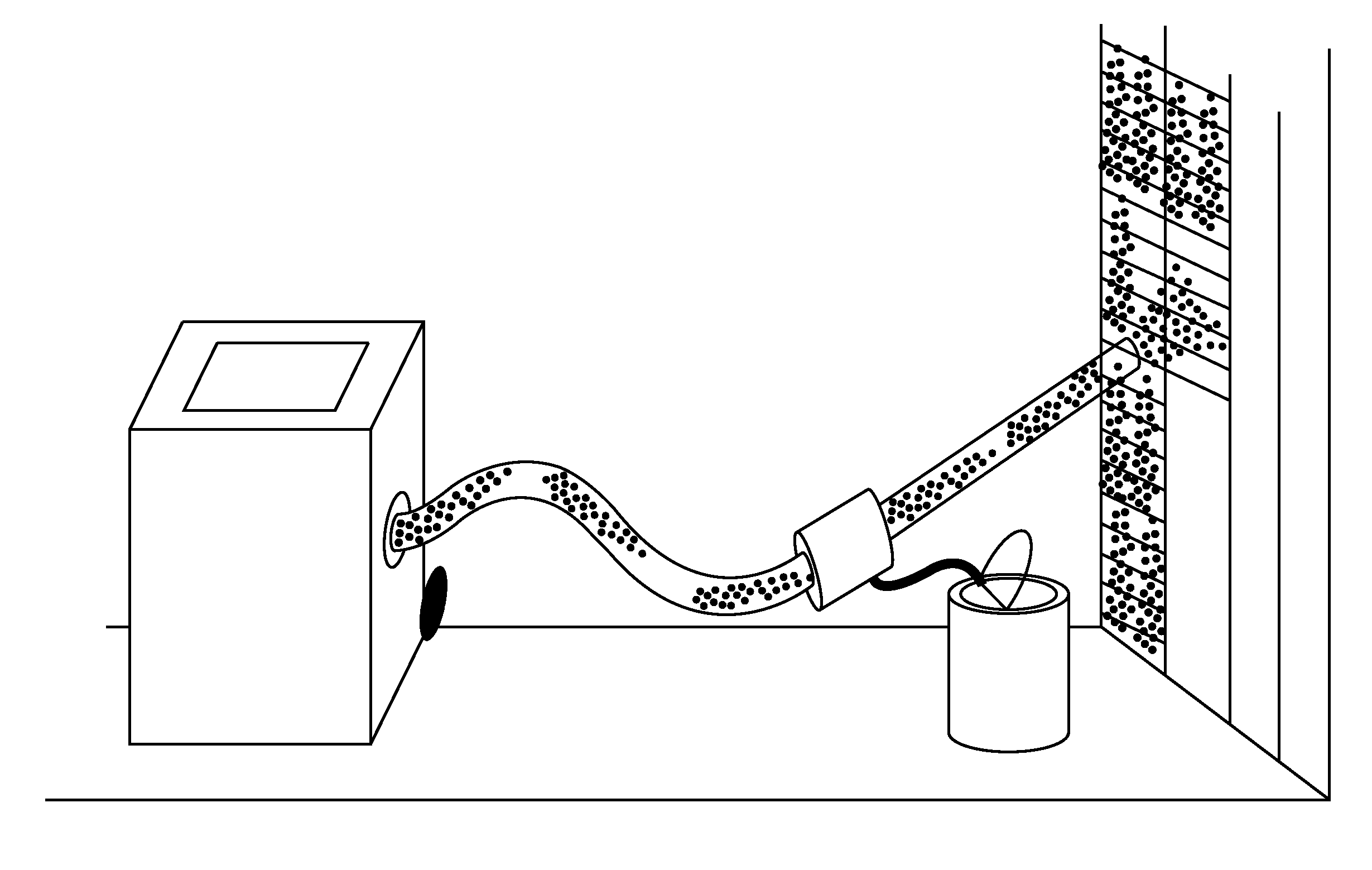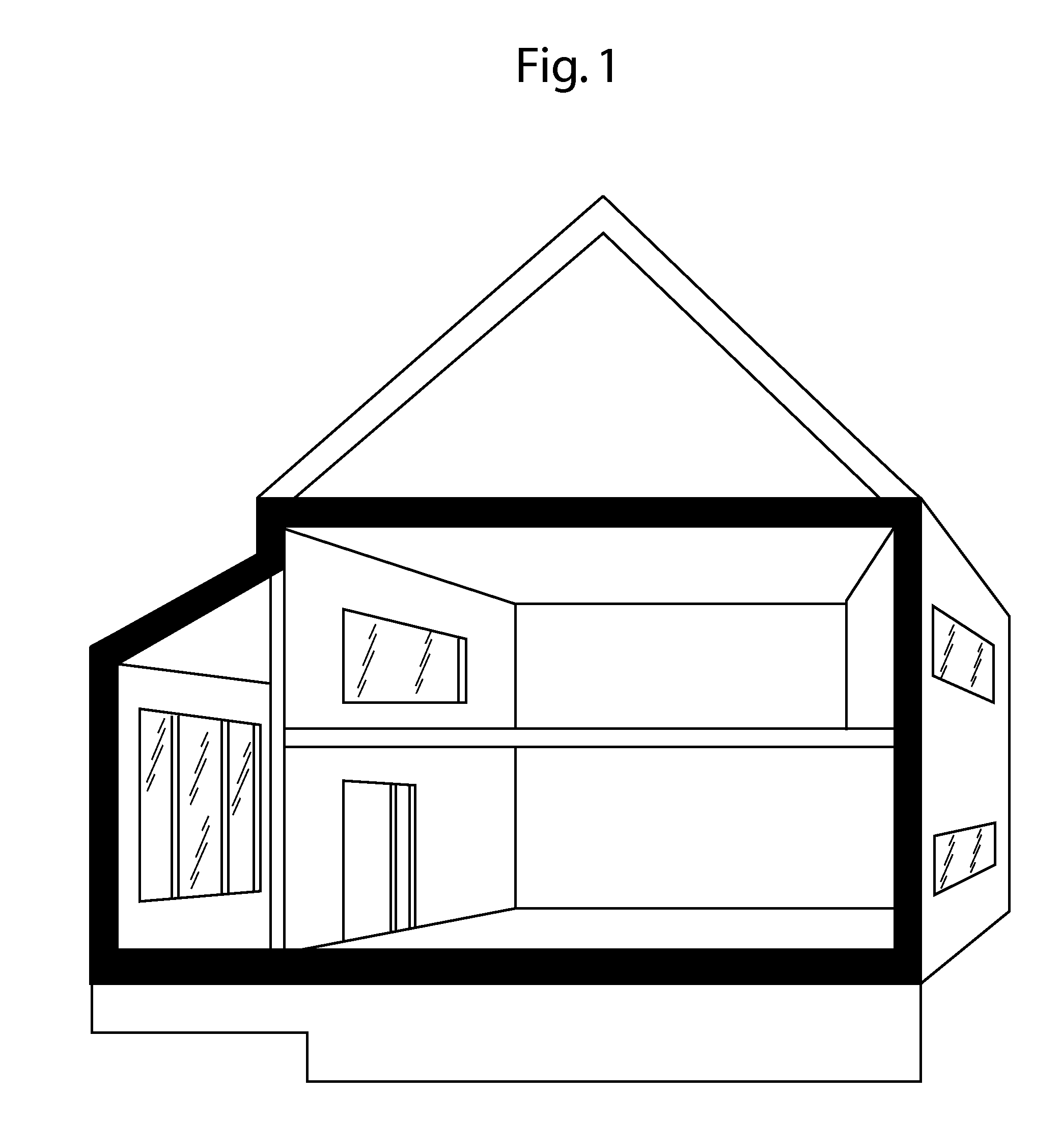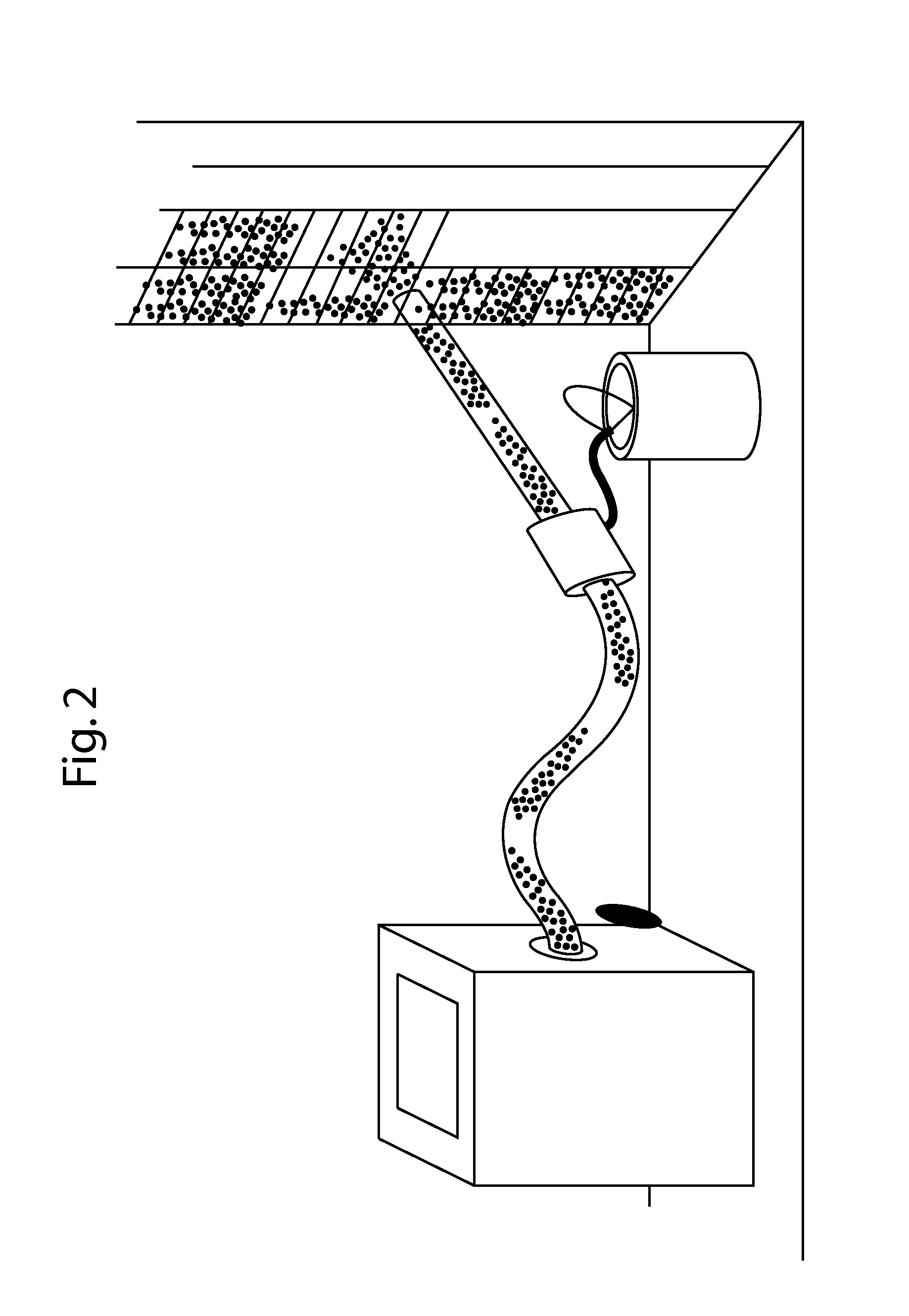Fiberglass insulation treated with a pesticide
a technology of fiberglass insulation and pesticide, applied in the field of treated insulation, can solve the problems of insufficient quantity of pesticide, many challenges in the creation of insulation products, and many challenges to achieve insulation products
- Summary
- Abstract
- Description
- Claims
- Application Information
AI Technical Summary
Benefits of technology
Problems solved by technology
Method used
Image
Examples
Embodiment Construction
[0027]Embodiments of the present invention relate to an insulation material comprising a pesticide. In some embodiments, the insulation can comprise fiberglass, for example, and can include a backing material such as, for example and not limitation, paper. The insulation can also comprise a pesticide, suitable for killing a plurality of pests, and provided at sufficient dosage and with sufficient bioavailability to effectively kill pests that contact the insulation.
[0028]To simplify and clarify explanation, the system is described below as fiberglass insulation with a pesticide. One skilled in the art will recognize, however, that the invention is not so limited. The system can also comprise other insulation materials such as, for example and not limitation, cotton, paper, and foam. Furthermore, while the system comprises a pesticide generally referred to below as a boric acid, other pesticides including, but not limited to, permethrin, cypermethrin, deltamethrin, pyrethroids, pyret...
PUM
 Login to View More
Login to View More Abstract
Description
Claims
Application Information
 Login to View More
Login to View More - R&D
- Intellectual Property
- Life Sciences
- Materials
- Tech Scout
- Unparalleled Data Quality
- Higher Quality Content
- 60% Fewer Hallucinations
Browse by: Latest US Patents, China's latest patents, Technical Efficacy Thesaurus, Application Domain, Technology Topic, Popular Technical Reports.
© 2025 PatSnap. All rights reserved.Legal|Privacy policy|Modern Slavery Act Transparency Statement|Sitemap|About US| Contact US: help@patsnap.com



